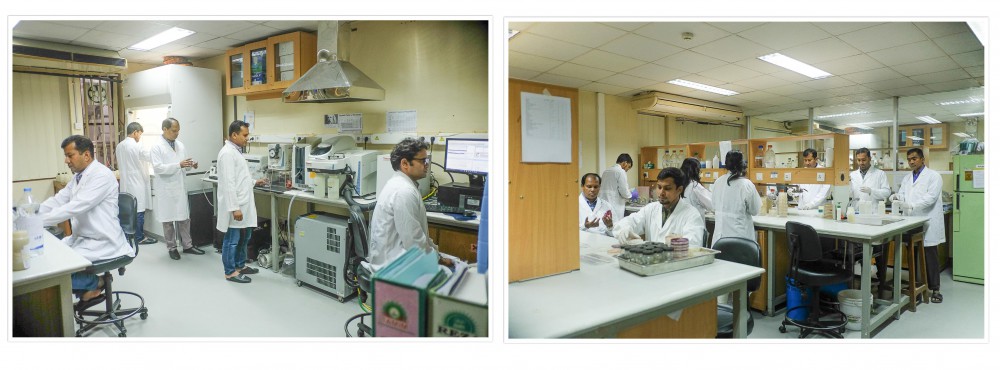Laboratory of Environmental Health

Facility Head: Dr. Zahid Hayat Mahmud, MSc, PhD
Dr Zahid Hayat Mahmud is a renowned Environment Microbiologist of icddr,b, as well as Bangladesh. After completing his graduation and post-graduation from the Department of Microbiology, University of Dhaka, he joined the icddr,b, in 1999. Later, he obtained his PhD from the University of Tokushima, Japan, securing Monbukagakusho Scholarship with the Government of Japan in 2005. Being a consultant of WHO, he provided technical support on laboratory management in response to the cholera outbreaks in Tanzania, Haiti, as well as Bangladesh. As a trainer, he had the opportunity to train the young researchers and students of the Great Lakes University of Kisumu (GLUK), Kenya, on laboratory techniques associated with water, sanitation, and hygiene, a collaborative project of GLUK and London School of Hygiene and Tropical Medicine. Before that, he had post-graduate training from the University of Maryland, Baltimore, and capacity building training in the Emerging Pathogens Institute, University of Florida, USA. He published about 50 articles in different peer-reviewed journals. He is also a peer reviewer of several impact journals. He is also the former part-time faculty of Gonobishwabidyalay as well as the present guest faculty of BRAC University. Currently, he has been working as an associate scientist, project coordinator, and head of the Laboratory of Environmental Health. His focus area is mainly water microbiology and water chemistry related to the ecology and epidemiology of diarrheagenic organisms.
The research conducted under the Laboratory of Environmental Health (LEH) focuses mainly on water microbiology and water chemistry related to the ecology and epidemiology of diarrheagenic organisms. The laboratory investigates alternative strategies to purify surface water for all kinds of household purposes, including drinking. The laboratory is working on the emergence of Vibrio vulnificus and Vibrio parahaemolyticus in the aquaculture reservoir of Bangladesh. They are conducting an assessment of the effects of climate variability and seasonal variations on the microbial quality of drinking water at point-of-use and source in households with access to an improved drinking water source in flood-prone and a drought-prone area in Bangladesh. They are involved in the development of the technique for deactivation of pathogens in faecal sludge and molecular characterisation of the chromium/heavy metal resistant bacteria isolated from tannery effluents and how these bacteria can be applied for bioremediation of chromium in tannery effluents. They are addressing challenges in providing local monitoring and surveillance solutions for assessing microbial contamination of water resources throughout Bangladesh, including Forcibly Displaced Myanmar Nationals (FDMN) camps, Cox’s Bazar. The laboratory is currently monitoring the efficiency of faecal sludge management technologies that are being used in the FDMN camps in Cox’s Bazar, and establishment of wastewater monitoring guidelines.
This laboratory provides cutting-edge facilities for microbiological and chemical testing services of water samples to the public, industries, national and international organisations, non-government organisations, embassies, and other interested bodies. Cultural and molecular-based diagnosis is being used in the laboratory for microbiological analysis. Different indicator bacteria, pathogenic microbes, and other bacteria are isolated and identified by standard protocols. Moreover, the LEH is hooked up with the LGC (Laboratory of the Government Chemist; UK’s designated National Measurement Institute for chemical and bioanalytical measurements as well as an international leader in the laboratory services, measurement standards, reference materials, genomics, and proficiency testing marketplaces) for external quality control. Recently, the LGC has evaluated the proficiency testing of microbiological and chemical analyses of water, and the laboratory has successfully passed the test.

The LEH has also regularly been participating in the analysis of samples collected from water-borne enteric disease outbreaks that occurred anywhere in Bangladesh. The lab experts also used to investigate the outbreak area for an emergency. The LEH has also been playing a critical role by responding (investigating, diagnosis, and training) immediately to the global outbreak.
Lab Services Menu
Test Name |
|---|